As one might imagine, the life of an aircraft mechanic is not a glamorous one. Earlier, I passed along a few memorable tales of my time as a mechanic for a larger regional airline. This time, I would like to elaborate on what a typical day is like for an airline mechanic. For me, my average day would start with a grueling drive.
Being a union shop, my seniority was high enough that I could have taken a first shift position (6:00AM to 2:30PM); however, I found the days off I could get on second shift better, since I was one of the senior mechanics on that shift. Upon arriving at the employee parking lot and catching the shuttle bus to the terminal, the fun would start.
A typical day at the office would start with all eight mechanics on duty gathering for a team meeting, where our lead and supervisor would go over the status of the planes that were currently either broken, or inbound with issues, and divvy out the day’s assignments. Sometimes, there would be one or two airplanes with unresolved issues that would be turned over to second shift by first shift.
If I was assigned to one of those planes, it would be a mad dash to whatever gate or hardstand (a remote parking spot, usually for out-of-service aircraft) the aircraft in question was parked at to get a verbal and visual turnover from the mechanics coming off shift. Since there was only 30 minutes of shift overlap, we had to make this quick! If we were not assigned to a plane that was already broken, we were on standby. If we were lucky to be on standby, we would monitor the arrivals status board and hang low until a call came in.
Usually, we would get lucky, and a flight crew would call in 20-30 minutes before they arrived. This gave us a chance to get a head start on our troubleshooting. We would do our best to decipher the issue from what limited information we had, and start going through our various manuals; usually the Aircraft Maintenance Manual (AMM) and the Fault Isolation Manual (FIM). This way, once the plane got to the gate, and all of the passengers deplaned, we could jump right into the issue and get it sorted out quickly.
The usual call would be a minor issue, such as a passenger reading light inoperative or an indicator light bulb burnt out on the flight deck, all the way up to having to replace a worn tire or brake. Most of the time, it was routine fixes; though sometimes, the call would be a little more intensive.
The airline I worked for operated a large fleet of Bombardier Dash 8-Q400s, and one of the most common issues we would have is a ’œDeIce Pressure’ caution. The Q400 uses rubber boots that inflate with engine bleed air to break away ice that can form on the wings and tail, and this system is controlled by a series of distribution valves – two in each wing and two in the tail. Usually, when we would get a call that a plane was inbound with this particular caution light, we knew that chances were it would be one of the valves that failed. So we would check our inventory to ensure we had one at our station in Seattle, gather all of our references that we needed from the manuals, then wait for the plane. If all of the boots were inflating properly, we knew we had a hole in a one somewhere. When that happened, we would get out a patch kit and do a thorough inspection of the section, usually by inflating the boots, finding the hole, then patching it with a special high-strength rubber cement and a rubber patch.
Other times, calls would be much more intensive and mind-boggling. Every once in a while, a plane would go down for maintenance at an outstation (a destination served by our airline, but did not have any stationed maintenance). When that would happen, we would usually get asked to head that way, in order of our seniority and qualifications. Since I was certified to perform engine runs and taxi the Q400, I would get asked to go out of town on a somewhat regular basis. Many of these would be easy trips, and we would be back in the same day. Others would be several days long, with very long hours to get the plane back into service.
Once, I was sent to Reno with another mechanic to fix a hydraulic leak on an aircraft, and I ended up being away from home base for 36 hours, with 24 of those hours being on the clock. Going on these rescue missions, as we called them, were usually an adventure. Most of the time, we would have less than 30 minutes of notice to grab our gear and get to our flight out. Many times, it was cut very close, and I have had a few flights held for me to get on-board. There were times, in extreme circumstances, where we would bump passengers off of a full flight, but we hated doing that. One of the perks of being a mechanic was that we had jump seat privileges, and if it was a full flight, we would usually sit in the flight deck with the pilots. That never got old!
Half of the fun about going on a rescue mission was trying to get home. Once the work was done, and the aircraft was back up and operational, we no longer had priority for getting seats on a flight. Usually, this was not an issue. Many times, the plane we had just fixed was no longer needed, as the passengers that the plane were originally scheduled for had been accommodated on other flights. In cases like this, the plane would be flown back to either Portland or Seattle for use on another flight, or as a ready spare in case of a maintenance issue with another aircraft.
In these cases, we would be able to fly back on the empty re-positioning flight. These were always fun, as it was usually just the pilots, flight attendants, and the mechanics. It is amazing the performance that the Q400 has when it is very lightly loaded. There were a few flights were we were airborne in less than a thousand feet.
Once in a blue moon, however, we would need to tag along on a check flight to fully diagnose an issue in the air. In these cases, it would just be the pilots and the mechanic. These were always a blast, as the crews very seldom got the chance to just fly around without anyone else on board. Usually, these flights would just entail a quick hop up to altitude, check out your issue, and land. Other times, it would require replicating conditions, such as bank angles, power settings, etc. This is when it would get fun! Imagine standing in the aisle of an empty plane, holding on to the seats, while the pilots would put the plane through its paces — it became the best roller coaster ride you could ever dream of!
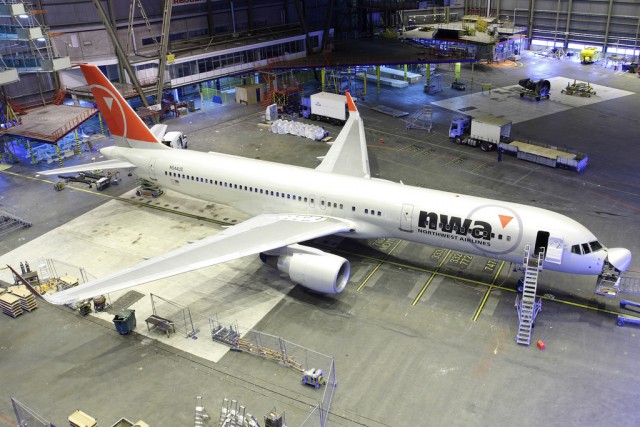
A now-classic Northwest Airlines Boeing 757 at Hangar Schiphol East for maintenance – Photo: Dirk-Jan Kraan | FlickrCC
The old adage with aircraft mechanics is that the job is not complete until the weight of the paperwork equals the weight of the repair accomplished, and this would seem very true at times. Usually, the paperwork would entail simply signing off the aircraft maintenance log book. When signing off the log book, we had to ensure that anyone who read our entry could comprehend what we did; thus, each sign off would usually have a detailed description of the work we accomplished, and would cite the various sections of the AMM, FIM, or FAA-approved maintenance task cards that the airline used.
At my carrier, after the aircraft log was signed off, we would still not be complete. We would go back to our office and enter the data that was on the log page into our maintenance tracking computer system, then pass off the paperwork to our lead or supervisor for review. Many times, we would have multiple pages to enter, and this could be a long and tiring task.
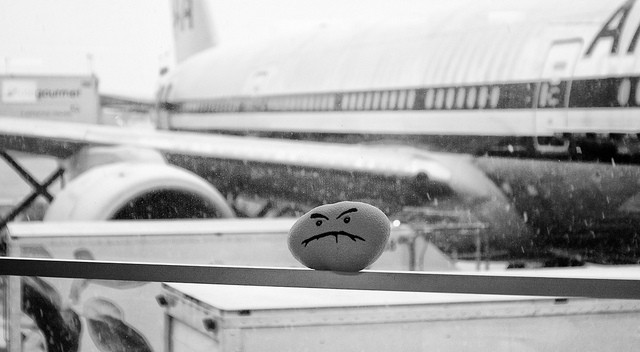
Delays are frustrating. But sometimes they are for good reasons – Photo: Joselito Tagarao | Flickr CC
My airline’s headquarters did not have a hangar for the aircraft I worked on, and our resources were limited. If an aircraft came in with an issue that we could not fix at our base, but it was still airworthy otherwise, maintenance controllers at our main maintenance base could obtain a ferry flight permit for said aircraft to get it to our hangar. When we did this, there would usually be severe limitations. For example, certain issues would require that the landing gear be down at all times, or that the aircraft not be pressurized on the flight, and weather would always be a factor. We loved and hated ferry flights. It would usually get a problem bird out of our hair, and become another crew’s problem but, the downside was the paperwork: ferry flights required a very precise log book entry and inspection, and it could drag on for nearly a whole shift at times.
BONUS: How to become an A&P mechanic, from the FAA
Most days, however, would not involve ferrying airplanes, going out of town on rescue missions to exotic locales (with populations less than 20,000), or a mad dash to fix broken plane after broken plane. No. The typical day would actually be quite uneventful, with only maybe an hour or so of pure knuckle busting scurrying during the large afternoon/evening bank of flights. We would usually be hanging out in our break room, playing cards or dominoes, reading, or catching up on the latest movie. And if that got boring, we would simply walk upstairs and stroll the terminal. The later would become a routine for a few of us. We would grab a radio so we could be contacted if needed, and stroll to the far end of the airport, a round trip distance of over a mile. It was a great way to pass the time and also get some exercise.
No matter what happened on any given day, we were always glad to see the end of the shift roll around. It signaled that it was time to catch the shuttle back to the employee lot, and then make the long drive home. We would all wake up the next morning to repeat the process all over again, but we were happy doing it.
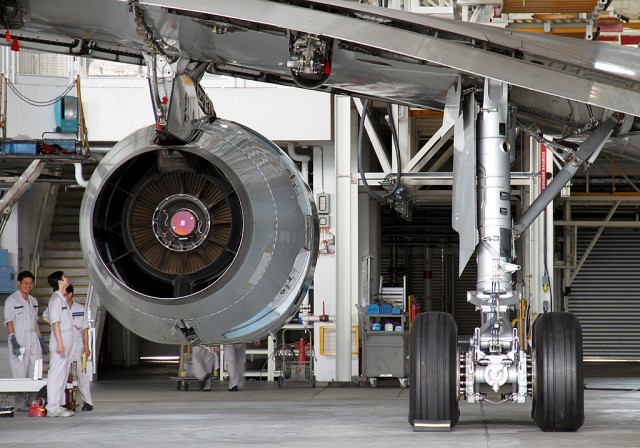
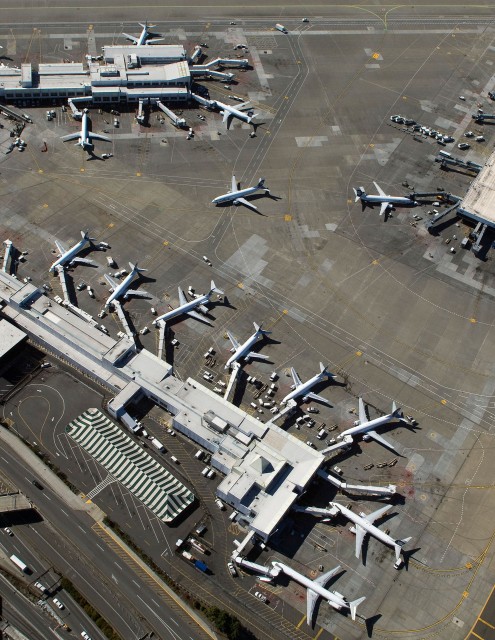
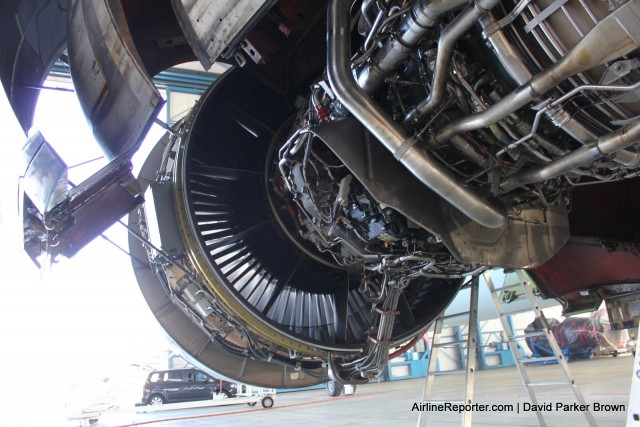
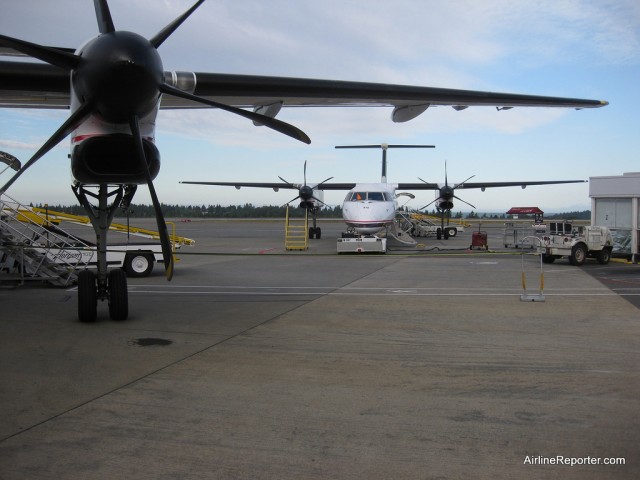
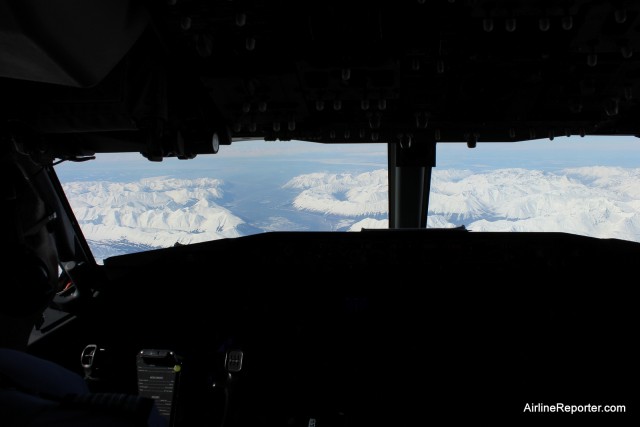
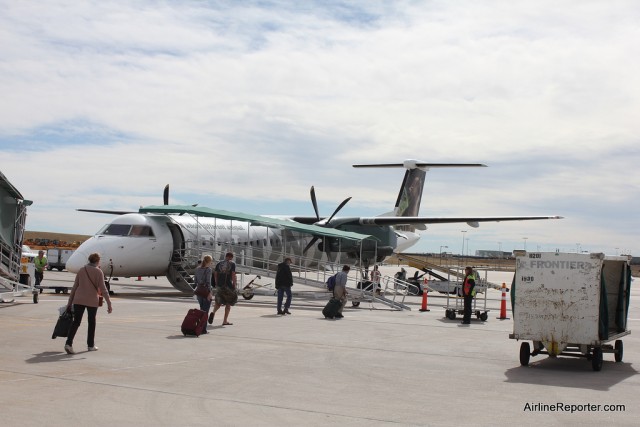
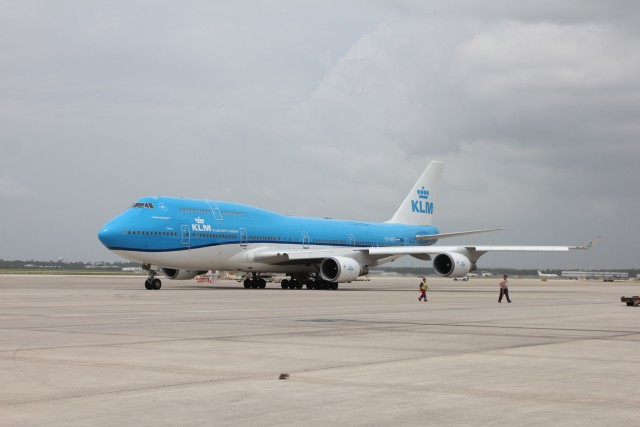
Interesting view into your life. Thanks.
Thank You, Fred!
Kris – AirlineReporter
Love all those “classic” pictures…especially the Sea-Tac aerial with the AS MD-80’s at the gates, and the QX Q400’s. But most of all the sorely missed NWA 757-200 with winglets. Gush.
Great insight into the daily life of an aircraft mechanic, thanks.
There is something seriously sexy about the 757, flew on one in China once, pity they are disappearing.
I agree! The 757 does indeed look sleek.
I am eagerly waiting for Boeing’s latest NSA.
Till then Airbus will be stealing orders from Boeing with the A321.
So who does the scheduled maintenance checks?
It depends on the airline and the type of check. For the carrier I worked for, we would do daily checks on every aircraft (Check the tires and the oil), and then every 50 flight hours, each aircraft would get a more detailed “Line Check” that would entail a basic inspection of the entire aircraft and usually a quick idle engine run to ensure that everything was in working order. The task cards for these checks were usually 15-20 pages long, and would take two mechanics roughly an hour to finish if nothing wrong was found. My carrier did in house A Checks, but I ever did those, and we did probably 80% of our own C Checks, and outsourced the rest, as we didn’t have the resources to do them. Not too long after I left, all of the C Checks were outsourced as a cost saving measure.
Kris – AirlineReporter
I remember years ago returning to Fort Lauderdale from the Philippines via Detroit on a NWA flight. On this leg, DTW to FLL, we were held up 30 minutes for 3 mechanics to come on board. Just as we were to push back from the gate, the A/C stopped working in part of the plane. Instead of opening the door and delaying us further, one of the mechanics realized it was a blown fuse and had some spares in his tool box. He replaced it within 5 minutes as the plane stood on the tarmac away from the gate and we were on our way.
Turns out the reason they came with us was the fact there were 3 planes down in FLL that could not fly out due to various reasons. In fact, in the 5 hour layover at DTW, we saw that 2 earlier flights due to arrive from FLL were canceled and was told a third from early in the morning had also canceled. Upon arrival in FLL at just after midnight, we saw a total of 6 planes parked in a remote area of the airport away from the 2 gates assigned to NWA. The usual number overnight at that time was supposed to be 3 with one kept at the gate as the 2nd gate was shared with JetBlue who had extra planes of their own as well. NWA flew to their 3 hubs DTW, MSP, and MEM in the morning.
Cases like that are very typical in the industry! There have been several times where I was out of town fixing a plane and would have to also end up working on the plane I flew in on, or on the one that would be my ride home. There was never a dull moment on rescue missions!
Kris – AirlineReporter
kris, great read! It is a major blessing when we love the work we do. It’s obvious that you love anything to do with aviation.
Just one item that I was not comfortable with. In paragraph 4, the statement about the “turnover” from the mechanics from the previous shift states “get a verbal and visual turnover”. No problem with that except my experience dictates that it should include a written turnover, too. The term AVO is the driver here. Avoid Verbal Orders. The team working the aircraft should write down in detail where they are in the work scope prior to the next team coming on. Then the replacement team should get the visual, verbal and written turnover and be confident of the status of the situation before the change of personnel takes place. In many cases, this written turnover is mandated in the airline’s GMM (General Maintenance Manual) which we, aircraft maintenance personnel, consider “The Bible” in our work environment.
I can rember 65 years ago making a desion not to work on any more airplanes, late at night,rain,snow and
cold. Then in the summer it was hot as hell and some times dodging bullets.
When I got discharged I went back to fixing cars at a nice quite dealer ship, 40 hours a week.
Fantastic article, Hopefully, this article will uphold the scenario of an airline mechanic life.
Kris Hull, a interesting life and write a mechanic life’s awesome port. thanks
Awesome writing. I like it. Hopefully we will get this kind of article to many as well.
Enjoyed the story Kris! I am working on a paper for a college class I’m in and I just wanted to ask if you get a decent amount of family time or if it really is back to back work? Thanks!